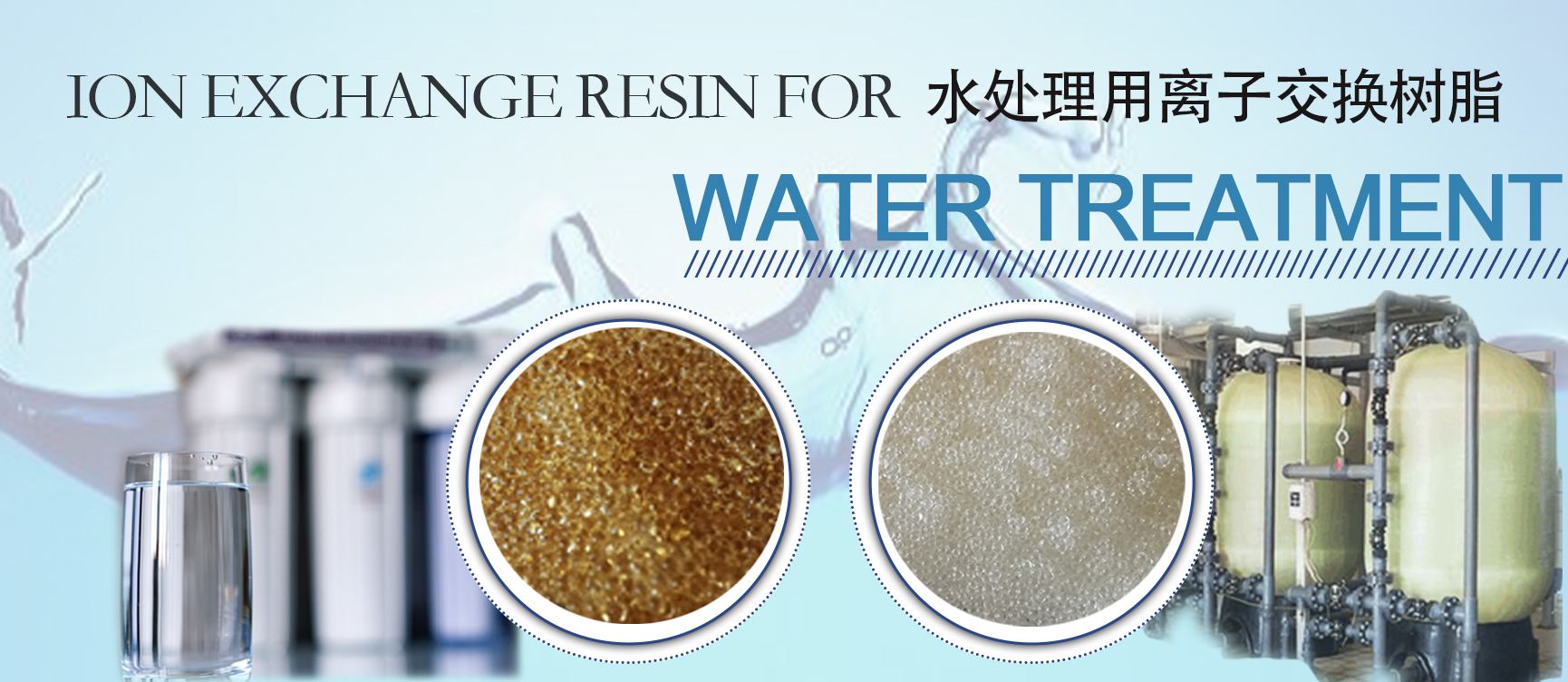Pollution and Treatment of Ion Exchange Resins (1)
Iron pollution and treatment:Both cation and anion resins may be contaminated with iron. The appearance of the contaminated resin is dark brown, which can turn black in severe cases. In general, when the iron content in every 100g of resin exceeds 150mg, treatment should be carried out. The presence of iron will accelerate the degradation of anion resin.
During the use of cation resin, most of the iron ions brought in by the raw water are present as Fe2+. After being absorbed by the resin, some of them are oxidized to Fe3+, which cannot be completely exchanged by H+during regeneration, resulting in iron pollution caused by retention in the resin. When using iron salt as a coagulant, some of the alum flowers are brought into the cation bed and filtered to accumulate on the surface of the resin layer. During regeneration, the acid solution dissolves the alum flowers, making them Fe3+. Some of them are absorbed by the cation resin, causing iron pollution. The large amount of Fe3+in industrial hydrochloric acid can also cause certain iron pollution to the resin. Cation exchange resins used for sodium ion exchange are more susceptible to iron contamination.
The iron content in anion resin can sometimes be many times higher than that in cation resin. The iron in the anion resin mainly comes from the regeneration solution. The caustic soda produced by the general diaphragm method contains 0.01%~0.03% Fe2O3, as well as 6-7mg/L NaClO3. During storage and transportation, such caustic soda will come into contact with iron containers and pipelines (without anti-corrosion coating) and generate ferrate (FeO4). After entering the anion bed with alkaline solution, ferrate will undergo decomposition due to a decrease in pH value, and its reaction formula is as follows:
2FeO42- + 10H+ → 2Fe3+ + 2/3 O2 + 5 H2O
Fe3+further generates Fe (OH) 3, which adheres to the anion resin particles, causing iron pollution.
After the resin is contaminated with iron, it cannot be removed during the general regeneration process and must be cleaned with hydrochloric acid.
The commonly used cleaning method is to use a 10% HCl solution. Before performing this method, the corrosion resistance of the exchanger equipment must be checked, otherwise hydrochloric acid with an inhibitor must be used.
Enter a 10% HCl solution equivalent to 0.5 times the volume of the resin bed from the top of the resin bed (taking into account the residual water in the resin bed and maintaining the concentration of the HCl solution), drain a water amount equivalent to the residual water in the bed from the bottom of the resin bed, stir the solution, and come into contact with the resin for 12 hours. Drain out the acid solution, rinse from top to bottom, then backwash for 30 minutes to remove loose substances, and then regenerate the resin bed before putting it into operation.
The measures to prevent iron pollution in resins include:
1. Reduce the iron content in the influent of the cation bed. Groundwater with high iron content should first undergo aeration treatment and manganese sand filtration to remove iron. For surface water with high iron content or when using iron salts as coagulants, alkaline agents such as Ca (OH) 2 or NaOH should be added to increase the pH value of the water and prevent iron ions from entering the cation bed.
2. Necessary anti-corrosion measures should be considered for pipelines and storage tanks transporting high iron content raw water to reduce the iron content of the raw water.
3. The storage tank and transportation pipeline for caustic soda used for anion bed regeneration should be lined with rubber for anti-corrosion to reduce the iron content of the alkali regeneration solution.
When the iron content of the resin exceeds 150g/gR, acid washing should be carried out.
PREV:Application of a...
NEXT:How to pretreat ...








